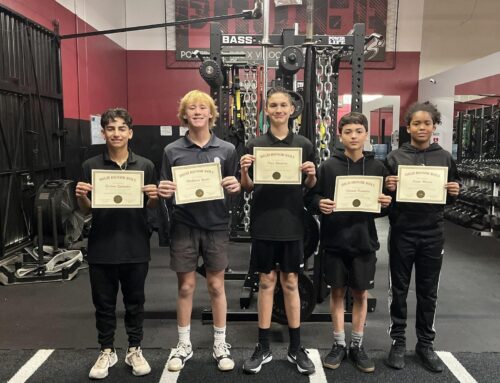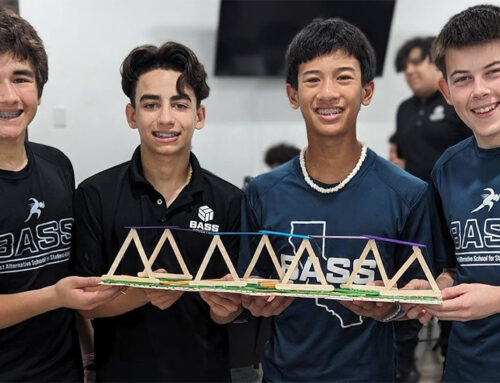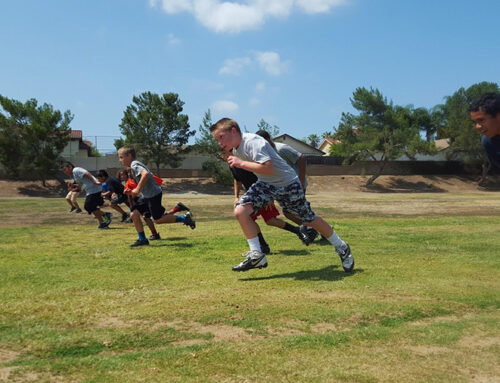
Of all aspects of performance training, speed is the one all athletes look to improve before anything else. Bottom Line… Speed kills! And if improved it can have a significant impact on your performance. Here at 10 tips for youth speed training that will help you leave your competition in the dust!
1: Improve Running Mechanics
It always amazes me the amount of athletes I get with improper running form, many times months after “speed training” with other coaches. To me, this has always been the easiest and fastest way to increase an athlete’s speed because even if they are decently fast, proper movement mechanics can take them to another level. Head positioning, arm action, posture, leg & foot action are all crucial coaching points for great movement efficiency.
2: Build Strength
One of the most important aspects of speed development I’ve ever learned is that speed is an extension of strength. This means that in order to get faster you gotta add some lean muscle. Even youth athletes who have yet to hit their hormonal growth spurt can benefit tremendously from a well designed periodized strength program.
3: Develop explosive power
Developing power is what bridges the gap between strength development and sport specific speed. Athletes build strength in order to apply force against the ground while running. That rate of force has to be applied as fast as possible and is a crucial part of speed development because all things being equal, the athlete who can express the greatest amount of force in the shortest amount of time while sprinting will always win. Plyometrics or jump training are key to developing this quality. Examples of plyometrics for youth athletes include box jumps, vertical jumps, skips, and bounds. We program plyometrics everyday for our athletes at the Boost Performance Center in Corona CA.
4: Improve Mobility
Mobility is all about your limbs moving through their full range of motion while sprinting. This allows proper placement and distribution of forces when we run. More specifically, mobility of the hips, hamstrings, & ankles are always focal points of my strength programs.
5: Get a lot of reps
Youth athletes need a lot of volume. At the Boost Performance Center our goal is maximize the amount of reps our athletes get because the best way for athletes to learn something is doing it over and over again. With distances kept between 5-20yds you can expect upward to 20 sprints in a given session.
6: Focus on shorter distances & progressively increase
Just as you have to increase the amount of weight you lift overtime in the weightroom, it’s important to increase the distance of sprints over time as well. I often see kids running extra long distances that they’re not ready for which many times leads to injury or unnecessary exertion. Further distances limit the amount of reps an athlete can withstand. Especially if the goal is to accelerate or generate a better initial burst. Start with 5 to 10yd sprints with a lot of reps and gradually increase the distance over time. Just remember that as the distance goes up, the reps must go down.
7: Use Contrast Training
Sprinting while either pushing/towing a sled or pulling a band and immediately going to an unweighted sprint is not only fun for youth athletes, it increases the potential for muscles to exert force faster. As I mentioned earlier this is crucial for speed development.
8: Be Consistent
Speed development is similar to strength development in that it takes time. Youth athletes and often their parents are always looking for a quick fix to get faster. Unfortunately no quick fixes exist, and any coach who says otherwise doesn’t understand speed. If an athlete is serious about getting faster, they need to stick to it. I tell my athletes at Boost that if they’re serious they need to give it a good 8 weeks.
9: Master one technique at a time
Remember, speed development requires improving our running mechanics over time. The process cant be rushed, so focus on improving 1 technique at a time, or have 1 emphasis per session. This way athletes won’t feel overwhelmed and have plenty of time to master their mechanics.
10: Have fun/compete
Finding ways to take the monotony out of speed training is what good coaches do. Try and get creative with games, and competitions. When it’s fun youth athletes give greater effort which leads to them pushing their threshold. This is what training is all about, getting athletes to move out of their comfort zone. We use competitions and games to wrap up sessions at Boost and it always ends on a strong note.
In summary:
Speed development isn’t like a quick fix diet, there are no shortcuts. It comes to those who are willing to put in the work. And as you can see, it doesn’t just require running, it’s a holistic approach that ecnompasses strength work, power development & mobility. Athletes these days are usually so focused on competition that these qualities often get placed on the back burner. In actuality, they should be a priority because if you really want to compete at a higher level you have to develop a passion for the grind that is strength and conditioning.

Level 1 & 2 Coach Bommarito Performance
CSCS / USAW



















